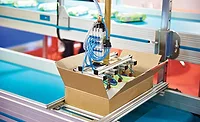Food Safety
How food processors can build corrective action programs
Processors must have a program to identify deviations and initiate corrective actions or corrections

The Preventive Controls regulation found in 21 CFR Part 117, which was enacted to enforce the Food Safety Modernization Act, expands corrective actions to include corrections. According to the rule, a correction is “an action to identify and correct a problem that occurred during the production of food, without other actions associated with a corrective action procedure (such as actions to reduce the likelihood that the problem will recur, evaluate all affected food for safety, and prevent affected food from entering commerce).”
An example of a correction would be a preoperational assessment for cleaning efficiency. If a line or piece of equipment were found to be dirty, it would need to be cleaned prior to start up. No product was affected, so it would be deemed a correction. What is interesting is that the regulation does not specifically mandate that all corrections be documented.
However, the regulation mandates that corrective actions must be taken if preventive controls are not properly implemented. The preventive controls of greatest concern are defined as process preventive controls, which are basically the critical control points (CCPs) which have defined critical limits, but all must be addressed. It also specifically mandates that corrective actions are required whenever pathogens are detected in ready-to-eat products and whenever pathogens or indicator organisms are detected in the environmental monitoring program.
According to FSMA, each processor must have a Preventive Controls Qualified Individual (PCQI). This person is responsible for developing the food safety program, ensuring the controls are validated, reviewing records and reassessing the plan. The PCQI duties can be done by a qualified individual working under direct supervision of the PCQI. The final change entails the review of monitoring and corrective action records. These must be reviewed within seven working days.
The regulations state that processors must have a program to identify deviations and initiate corrective actions or corrections. Each processor must establish procedures to document deviations at CCPs or in preventive controls.
Most companies utilize two basic forms as part of their corrective action programs: a CAR or Corrective Action Report, which is started for each deviation or activity requiring a corrective action, and a CAPA (Corrective and Preventive Action) log, which serves as a master list for all deviations.
Although having the forms in a hard copy version is acceptable, most processors have established electronic CAPA logs. An electronic log should at a minimum include the following fields:
- Concern – A standard term should be used for this section to allow for ease of sorting, i.e., pests, equipment failure.
- Source – Where was the concern discovered?
- Description – Provide details on the problem.
- C/P Action – Describe how the issue will be corrected.
- Responsibility – Who has been assigned to carry out the corrective action?
- Date – When the corrective action was decided upon.
- Target Date – When the corrective action should be completed.
- Date Completed – Date work was done by the responsible person.
- Verified By – Quality staff must verify that the work was done properly and/or the corrections were effective.
When one of the key fields is “Verified By,” it is up to the quality group and the PCQI to review the records and ensure that the corrective actions were not only completed satisfactorily, but have remained effective. Not closing the loop is one failure that often occurs in the food industry.
Looking for quick answers on food safety topics?
Try Ask FSM, our new smart AI search tool.
Ask FSM →
It was noted earlier that the Preventive Controls regulation does not mandate that all corrections be documented, which is something processors need to address in their own programs. Making a correction may not affect the safety of any product, but without records, there would be no way of knowing that the same correction might have been made numerous times within a quarter. Using the cleaning example discussed earlier, this could mean a number of things, such as a poorly designed cleaning program, poor execution or an employee issue. The objective is to identify a problem and fix it, not simply make the same correction time and again. So, think about how corrections will be addressed and documented.
The next issue is the extent of the corrective action program. Food safety regulations focus only on deviations to the HACCP plan or program and not other issues, such as problems with a pest control program, adverse findings from internal or third-party audits or any of a number of other issues.
More and more processors are expanding their corrective actions to ensure they include these and other issues. The CAR form can be used for an issue, and an electronic CAPA log allows one to document the source of the issue, allowing food safety issues to be segregated from other concerns. The CAPA log is something that should be utilized at every meeting of the food safety team.
Processors building corrective action programs also need to consider whether a root cause analysis should be conducted on each issue. Root cause analysis can be expensive, time consuming and often very intensive. Some companies rank deviations or issues that require corrective actions as critical, major or minor and determine whether a root cause analysis is needed on that basis.
Corrective actions are an essential element in every food safety program, since things will go wrong in many different areas in the plant. The goal is to identify problems and fix them, so that the potential for a reoccurrence is reduced. If a deviation occurs, processors need to identify any product that may have been affected and include disposal of it in their corrective actions.
And, of course, all this must be documented and verified on a regular basis. As people at FDA have said, “If it is not written down, it never happened.”









